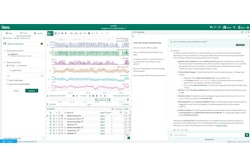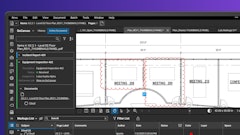I was toying around with a couple of topics for this month’s column when I came across some articles about advances being made with IT and other electronic devices. Quite frankly, the products available today are outstanding, cost effective and easily adaptable to business people on the move — in other words, contractors.
Before I saw these articles, the topic I intended to cover was an outlook for 2006 and how to plan for it. After further thought, I decided I could kill two birds with one stone and cover both. Let’s cover the overview first.
Costs are on the upswing
As you know, the construction industry moves in cycles. You have all been there before. So what’s different now, and how will these variables affect 2006?
Construction activity and opportunities for new work should continue. Of course, there will be areas where this is not the case. But in general, they should remain on course.
Costs for many commodities are increasing, with some experiencing unusual highs and lows that are hard to track and/or project. Follow these swings weekly and make allowances for them in your contracts. Depending on what kind of work you do, these costs could eat up profits very quickly.
Interest rates are on the move. You all finance equipment and have to shoulder the burden of financing costs. With interest rates going up, your hourly or daily equipment rates will need to change, as well.
Equipment costs are expected to increase every year for at least the next three years because of inflationary pressures. What I have heard is expect 3% to 5% per year. Keep this in mind when compiling long-term bids.
Cost controls are a must. If you have an old system, or your business has grown to the point where you find it hard to keep track of what is going on, it may be time to investigate a new system and the hardware that goes along with it.
Many equipment dealers are trying to help contractors make good business decisions. If you need help, especially in the area of fleet management and/or rental decisions, ask your local dealer.
Can new technology help?
Competition is tough and will get tougher as forward-thinking contractors change the way they do business and lower their overall fixed costs. This is where our discussion about new electronic devices comes in.
A variety of electronic devices are available that allow billing and change orders and payroll information to be collected on a daily, real-time basis. Having current, reliable data allows for faster decision making and more efficient operations. Such devices can include cell phones, GPS, Blackberry, wireless capabilities and traditional or laptop computers.
Consider how you could put these electronic devices to work to:
- make your business activities more efficient,
- reduce travel time,
- allow you to function at almost 100% out of the office,
- keep you in constant touch with all your crews in the field,
- track people and equipment,
- help you order supplies and rental equipment in the field,
- allow for an electronically “tracked” approval process on change orders and purchase orders,
- issue invoices,
- review banking transactions, etc.
This may be a good year to consider these alternatives because you probably have the funds to try some things out. Think about it — do you know of an industry that has not endorsed some of these concepts over the last year? I can’t.
So the question to ask yourself is, “What can these electronic devices do for me?” Plenty, I bet. But as with all things financial or computer related, you need to have a system that works and that you understand; you have to train your people; and you have to monitor (or have someone monitor) to ensure the system is being followed religiously. If you can’t do that, you may be wasting your money.
Some of the technology is pretty simple. Some you are probably using already. Some will require time, effort and money. But if the profits are there, and you want to do more with less time and less people, now is the time to investigate these solutions. So how do you go about it?
Do your homework and investigate how any solution fits into your business.
Call your system provider and ask what is going on in your segment of the marketplace. Who is doing what and which tools are they employing?
Ask around at conventions and trade shows. Find out what other people are utilizing and who they have helping them to implement it.
Ask for cost/benefit examples. Determine if the solution is something you can use, and if it will reduce contract costs, administration costs or just plain people costs.
Make sure you have the “horsepower” to help review and implement the solution.
Take a first step and follow through on a system.
Imagine a contractor who has all the new bells and whistles, then ask yourself how much more it can do and bill using less time and, perhaps, less people. If it is a firm you’re competing against, you may have a problem. It may not be a big problem now.
But as more of your peers adopt electronic solutions, you will need to either get on the bandwagon or keep reducing prices until you can’t do it any longer.
Times are changing for all of us. Be proactive in 2006 to improve your business.



















